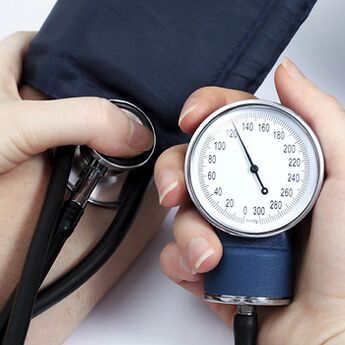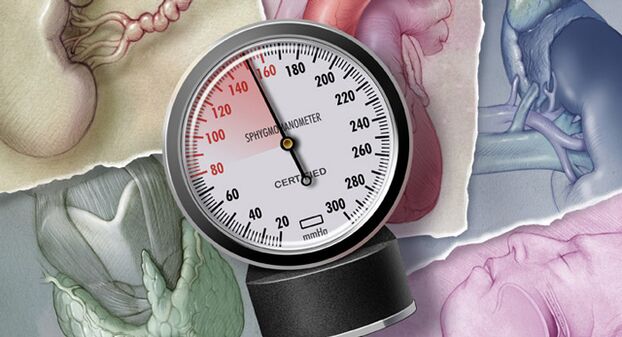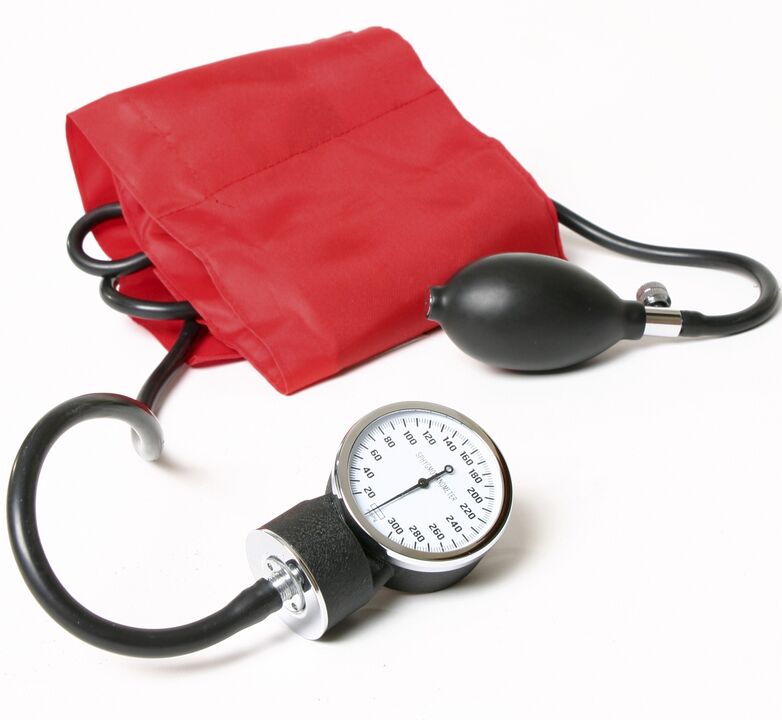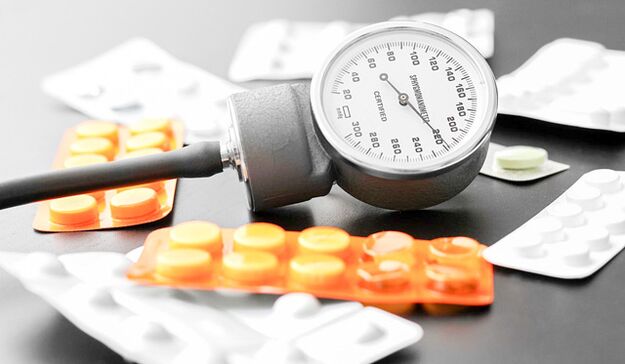
Hypertension (HTN) is one of the most common diseases in the cardiovascular system, which only according to the estimated data affects one -third of the world's population.At the age of 60-65, more than half of the population was diagnosed with hypertension.The disease is called a "silent killer", as its symptoms may soon, while changes in the blood vessel wall begin at a symptomless stage, greatly increase the risk of vascular accidents.
In Western literature, the disease is called arterial hypertension (AH).Others have adopted this formulation, though both "hypertension" and "hypertension" are still in general.
Attention to arterial hypertension is not caused by its clinical manifestations such as complications in the form of acute vascular disorders in the brain, heart, and kidneys.Their prevention is the main goal of treatment aimed at maintaining normal blood pressure (BP).
One important thing is to identify all possible risk factors,and explain their role in the development of the disease.The relationship between the level of hypertension and the existing risk factors is displayed in the diagnosis, which facilitates the assessment of the patient's condition and prognosis.
For most patients, the number in the diagnosis after "ah" does not mean anything, though it is clear that the higher the level and the risk indicator, the worse the prognosis and the more serious pathology.In this article we will try to understand how and why one or another level of hypertension is diagnosed and what underlying the risk of complications.
The causes and risk factors of hypertension
Causes of many arterial hypertension.GovTalk about the main hypertension, or important, we andWe mean the case when there is no previous disease or internal organs pathology.In other words, such hypertension occurs on its own, which involves other organs in the pathological process.Major hypertension accounts for more than 90% of chronic high blood pressure cases.
The main causes of hypertension are considered to be pressure and psycho-emotional advantages, which contribute to the disruption of the central mechanism of pressure in the brain, thus the humoral mechanism suffers, and the target organs are involved (kidney, heart, retina).

Secondary hypertension- Other pathological manifestations, so the cause is always known.It accompanies kidney, heart, brain, endocrine and secondary disorders.After the basic disease is cured, hypertension is gone, so it does not make sense to determine the risk and degree in this case.Symptom hypertension contributes to no more than 10% of cases.
Hypertension risk factors are also known to everyone.Hypertension schools are being created in the clinic, which specializes in information to the residents of the unfavorable conditions that lead to hypertension.Any therapist or cardiologist will tell the patient about the risk in the first case of high blood pressure.
Among the conditions exposed to hypertension, the most important is:
- Smoking;
- Excess salt in food, excessive fluid intake;
- Inadequate physical activity;
- Alcohol abuse;
- Weight and fat metabolism disorders;
- The psycho-emotional and physical burden of chronic.
If we can exclude the factors listed or at least try to reduce their effects on health, then features such as gender, age, lineage cannot be changed, and therefore we need to be patient with them, but do not forget the increasing risks.
Classification of arterial hypertension and risk level determination
Hypertension classification involves identifying levels, levels of disease and the risk of vascular accidents.
Stage of diseaseDepending on the clinical manifestation.Highlights:
- Premature levels, when there is no sign of hypertension and the patient is unaware of increased blood pressure;
- Level 1 hypertension, when pressure is raised, the crisis may be, but there are no signs of target organ damage;
- Stage 2 is accompanied by damage to the target organs - myocardial hypertrophy, changes in the retina of the eye are significant, and the kidneys suffer;
- In stage 3, stroke, myocardial ischemia, vision pathology, changes in vessels (aortic aneurysm, atherosclerosis) are possible.
A degree of hypertension
Determining the level of hypertension is important in assessing risk and prognosis and based on pressure numbers.It should be said that normal blood pressure values also have different clinical importance.Therefore, the indicator is up to 120/80 mm Hg.Art.countoptimal,ordinaryPressure will be between 120-129 mmhg.Art.Systolic and 80-84 mm Hg.Art.diastolic.Pressure number 130-139/85-89 mmhg.Art.Still located in the normal limit, but approaching the border with the pathology, which is why they are called "very normal", And the patient can be told that he has high normal blood pressure. These indicators can be considered pre-patological, because the pressure is only" a few millimeters "rather than being raised.

From the time the blood pressure reaches 140/90 mm Hg.Art.We can already talk about the presence of the disease.This indicator is used to determine the level of hypertension itself:
- The first level of hypertension (HTN or AH 1st in diagnosis) means an increase in pressure within 140-159/90-99 mmhg.Art.
- Stage 2 Headache is accompanied by 160-179/100-109 mm Hg.Art.
- With level 3 hypertension, the pressure is 180/100 mmhg.Art.and higher.
It occurs that the number of systolic pressure increases, amounting to 140 mm Hg.Art.And higher, while the diastolic value is in normal value.In this case they talkisolated systolic formhypertension.In other cases, systolic and diastolic pressure indicators are in line with different levels of the disease, so the doctor makes a diagnosis in favor of a higher level, and regardless of the conclusion is taken based on systolic or diastolic pressure.
The most accurate diagnosis of hypertension is possible when the disease is first diagnosed, when treatment has not been performed and the patient does not take any antihypertensive drugs.During therapy, the numbers -thought they fall, and when they are stopped, on the contrary, they can increase significantly, so it is no longer possible to assess enough levels.
The concept of risk in diagnosis
Hypertension is dangerous due to complications.It is no secret that most patients die or become disabled not from the facts of the high blood pressure itself, but from the acute disorders that they carry.
Cerebral bleeding or ischemic necrosis, myocardial infarction, kidney failure is the most dangerous condition that is provoked by high blood pressure.In this case, for each patient after a thorough examinationThe risk is determined, shown in the diagnosis by numbers 1, 2, 3, 4. Therefore, the diagnosis is based on hypertension and the risk of vascular complications (for example, hypertension/hypertension level 2, risk 4).
Risk stratification criteriaFor patients with hypertension, external conditions, the presence of other diseases and metabolic disorders, the involvement of target organs, and similar changes in organs and systems are used.
The main risk factors affecting prognosis include:
- The patient's age is after 55 years for men and 65 for women;
- Smoking;
- Disorders of lipid metabolism (beyond cholesterol norms, low density lipoprotein, lower high density lipid fractions);
- The presence of cardiovascular pathology in families among siblings of blood under 65 and 55 years for women and men, respectively;
- Excessive weight, when the abdominal circumference exceeds 102 cm in men and 88 cm in women.
The factors listed are considered to be the main, but many patients with hypertension suffer from diabetes, impaired glucose tolerance, lead to inactive life, and have abnormalities in the blood clotting system in the form of increased fibrinogen concentration.These factors are consideredannex, also increases the likelihood of complications.
Damage to the target organs characterizes hypertension, starting from Stage 2, and acts as an important criterion at which the risk is determined, therefore, the patient's examination includes ECG, heart ultrasound to determine the level of muscle hypertrophy, blood and urine tests for kidney function (creatinine, protein).
First of all, the heart suffers from high blood pressure, which induces blood into the vessel with increased power.When arteries and arterioles change, as their walls lose elasticity and lumens become spasmodic, the burden on the liver increases.Characteristic features taken into account when risk stratification is consideredMyocardial hypertrophy, which can be suspected by the ECG, can be determined by the ultrasound examination.
The involvement of kidney as a target organ is characterized by increased creatinine in blood and urine and the appearance of albumin protein in the urine.Against the background of hypertension, large arterial walls, atherosclerotic plaques appear, which can be detected by ultrasound (carotid, brachiocephalic artery).
The third stage of hypertension occurs with related pathology, that is, associated with hypertension.Among the related diseases, the most important for prognosis are stroke, temporary ischemia attacks, heart infarction and angina, diabetes nephropathy, kidney failure, retinal damage (retinal damage) due to hypertension.
Therefore, the reader may understand how you can determine the level of headache freely.This is not difficult, you just need to measure the pressure.Next, you can consider the presence of certain risk factors, take into account age, gender, laboratory parameters, ECG data, ultrasound, and more.In general, they are listed above.
For example, the patient's blood pressure corresponds to the level 1 hypertension, but at the same time he has a stroke, which means that the risk will be maximum - 4, although the stroke is one problem other than hypertension.If the pressure corresponds to the first or second degree, and the only risk factor that can be observed is smoking and age in a relatively good health background, then the risk will be modest - 1 tbsp.(2 tbsp.), Risk 2.
To make it clearer what the risk indicator is in the diagnosis, you can summarize everything in a small schedule.By determining your degree and "calculating" the factors listed above, you can determine the risk of vascular accidents and hypertension complications for specific patients.Number 1 means low risk, 2 - medium, 3 - high, 4 - very high risk of complications.
| Risk factors | BP 130-139/85-89, Risk | Gb (ah) 1, risk | Gb 2, risk | Gb 3, risk |
|---|---|---|---|---|
| No | 1 | 2 | 3 | |
| 1-2 | 1 | 2 | 2 | 4 |
| More than three factors/target damage/diabetes | 3 | 3 | 3 | 4 |
| related pathology | 4 | 4 | 4 | 4 |
Low risk means the probability of vascular accidents is not more than 15%, moderate - up to 20%, high risk shows the development of complications in one -third of patients from this group, with a very high risk of more than 30%of patients exposed to complications.
Manifestations and complications of headache
Hypertension manifestations are determined by the level of the disease.During the premature period, the patient is feeling well, and only the reading of the tonometer shows the disease developing.

As a change in blood vessels and heart progress, symptoms appear in the form of headaches, weakness, decrease in performance, periodic dizziness, visual symptoms in the form of poor visual acuity, "spots" flashing before the eyes.All of these signs are not stated during stable pathology, but at the time of the development of the hypertension crisis, the clinic becomes brighter:
- Severe headache;
- Noise, ringing in the head or ear;
- Dark in the eyes;
- Pain in the heart area;
- Dyspnea;
- Facial hyperemia;
- Joy and fear.
Hypertension crisis is provoked by traumatic situations, hard work, stress, consumption of coffee and alcoholic beverages, so patients with a prescribed diagnosis should avoid that influence.Against the background of hypertension crisis, the possibility of complications increased significantly, including life -threatening:
- Bleeding or cerebral infarction;
- Acute hypertension encephalopathy, possibly with cerebral edema;
- Pulmonary edema;
- Acute renal failure;
- Heart attack.
How to properly measure blood pressure?
If there is a reason to suspect high blood pressure, the first thing a specialist will do is to measure it.As of recently, it is believed that the number of blood pressure is usually different in different hands, but, as shown by the practice, despite the difference in 10 mm Hg.Art.It can occur due to the pathology of the peripheral vessel, so different pressure on the right and left should be treated carefully.

To get the most reliable figure, it is recommended to measure the pressure three times on each arm with a short time interval, record each result.In most patients, the smallest value obtained is the most correct, but in some cases pressure increases from measurement to measurement, which does not always speak in favor of hypertension.
Large selection and availability of devices to measure blood pressure make it monitor it in many people at home.Usually, hypertension patients have tonometer at home, at hand, so that if their health gets worse, they can immediately measure blood pressure.However, it should be noted that fluctuations are also possible in true individuals -healthy without hypertension, so an advantage of the norm should not be considered a disease, and to diagnose hypertension, pressure must be measured at different times, under different and repeated conditions.
When diagnosing hypertension, blood pressure numbers, electrocardiographic data and heart auscultation results are considered basic.When listening, it is possible to detect sound, tone increases, and arrhythmia.ECG, starting from the second stage, will show signs of pressure on the left side of the heart.
Hypertension treatment
To correct high blood pressure, the treatment regimen has been developed including different groups of groups and different mechanisms of action.TheirThe combination and dosage are selected by the doctor individuallyTake into account stage, equivalent pathology, and hypertension reaction to certain drugs.After diagnosis of hypertension is established and before starting the drug treatment, doctors will recommend non-drug measures that increase the effectiveness of pharmacological drugs, and sometimes allow you to reduce the dose of the drug or leave at least some of them.
First of all, it is recommended to normalize the regime, eliminate stress, and ensure physical activity.The diet aims to reduce the intake of salt and fluid, eliminating alcohol, coffee and drinks and substances that stimulate the nervous system.If you are overweight, you should limit your calories and avoid fatty, flour, fried and spicy foods.
Non-drug measures in the early stages of hypertension can have a good effect that the need to prescribe medications is no longer needed.If these steps do not work, the doctor prescribes the appropriate medication.
The goal of treating hypertension is not only to reduce blood pressure, but also to eliminate, if possible, cause.

Antihypertensive drugs from the following groups are traditionally used to treat hypertension:
- Diuretics;
- Angiotensin II receptor antagonist;
- ACE inhibitors;
- Adrenergic blockers;
- Calcium channel blocker.
Each year the list of medicines that reduce blood pressure grows and at the same time become more effective and safe, with fewer adverse reactions.When starting therapy, one drug is prescribed in minimum dose;If it does not work, it can be improved.If the disease progresses and the pressure does not remain at an acceptable value, then other drugs from different groups are added to the first drug.Clinical observation shows that the effect is better with combined therapy than prescribing one drug in the maximum.
Reducing the risk of vascular complications is important in choosing a treatment regimen.Therefore, it has been noted that some combinations have a more significant "protective" effect on the organ, while others allow for better pressure control.In such cases, experts prefer the combination of medications that reduce the likelihood of complications, although there are several daily fluctuations in blood pressure.
In some cases, it is necessary to take into account the equivalent pathology, which makes adjustments to the headache treatment regimen.For example, men with prostate adenomas are prescribed alpha-blockers, which are not recommended for continuous use to reduce blood pressure in other patients.
The most widely used ACE inhibitors, calcium channel blockers,prescribed to young and old patients, with or without the same disease, diuretics, sartans.The drugs in this group are ideal for early treatment, which can then be supplemented by the third drug of different compositions.
ACE inhibitors reduce blood pressure and at the same time have a protective effect on the kidneys and myocardium.They are better in young patients, women who take hormone contraceptives, are shown for diabetes, and for older patients.
DiureticNo less popular.To reduce bad reactions, they are combined with ACE inhibitors, sometimes "in one tablet."
Beta blockersIt is not a priority group for hypertension, but effective for heart pathology - heart failure, tachycardia, coronary disease.
Calcium channel blockersOften prescribed in combination with ACE inhibitors, they are great for bronchial asthma in combination with hypertension, as they do not cause bronchospasm.
Angiotensin receptor antagonist- The most prescribed group of drugs for hypertension.They effectively reduce blood pressure and do not cause coughing as many ACE inhibitors.But in America they are very common due to a 40% reduction in the risk of Alzheimer's disease.
When treating hypertension, it is important not only to choose an effective regimen, but also to take medicine for a long time, even for life.Many patients believe that when the pressure reaches a normal level, the treatment can be stopped, but they seize the pills during the crisis.It is well known that the use of non -systematic antihypertensive drugs is even more harmful to health than the absence of complete treatment, so informing the patient about the duration of treatment is one of the most important doctors.























